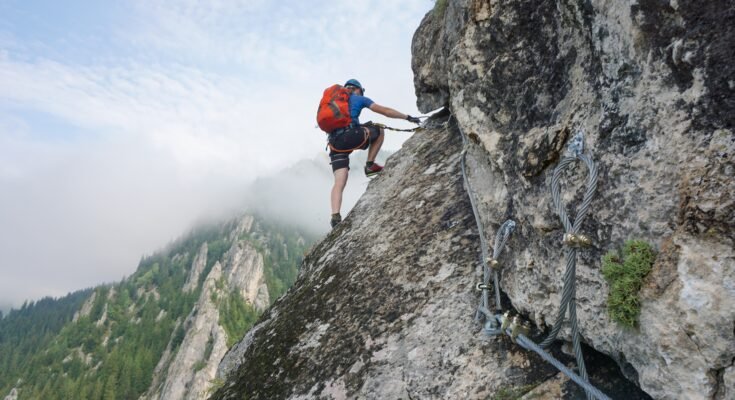Mountain climbing is one of the most exhilarating and fulfilling outdoor activities. For adventure enthusiasts, mountaineering offers an unmatched sense of achievement, breathtaking vistas, and a powerful connection to nature. If you’re a beginner ready to take on this thrilling challenge, knowing which peaks to aim for can make all the difference. This guide will introduce you to some of the must-visit peaks for aspiring mountaineers, offering valuable insights and tips to help you on your climbing journey.
The Allure of Mountain Climbing
Mountain climbing isn’t just about reaching the summit. It’s about the adventure, the preparation, and the personal growth that comes with each step. For beginners, understanding the basics and setting realistic goals is crucial. Starting with approachable peaks can build your confidence and skills, setting you up for more challenging climbs in the future.
Why Start with Beginner-Friendly Peaks?
Choosing the right peaks for your initial climbs ensures a safer and more enjoyable experience. Beginner-friendly mountains often have well-marked trails, manageable elevations, and support systems in place. These factors reduce risks and allow you to focus on honing your climbing techniques and enjoying the adventure.
Mount Kilimanjaro, Tanzania
The Roof of Africa
Standing tall at 19,341 feet, Mount Kilimanjaro is Africa’s highest peak and a favorite among novice climbers. Its non-technical routes and varied ecosystems provide a perfect introduction to high-altitude climbing. Kilimanjaro offers several routes, with the Marangu Route being the most popular for its huts and established paths.
What to Expect
Climbing Kilimanjaro takes about 5-9 days, depending on the route chosen. You’ll traverse through rainforests, moorlands, and alpine deserts before reaching the snow-capped summit. The trek requires good physical fitness but doesn’t involve technical climbing skills, making it accessible for beginners.
Preparing for the Climb
Acclimatization is key to a successful Kilimanjaro ascent. Take your time, stay hydrated, and listen to your body. Hiring a reputable guide service can enhance your experience by providing support and ensuring safety throughout the climb.
Mount Fuji, Japan
Japan’s Iconic Peak
Mount Fuji, standing at 12,388 feet, is an iconic symbol of Japan and a popular climbing destination. Known for its symmetrical cone shape and stunning views, Fuji attracts climbers from around the world. The Yoshida Trail is the most frequented route, offering mountain huts and amenities along the way.
Journey to the Summit
Climbing Mount Fuji typically takes 5-7 hours to ascend and another 3-5 hours to descend. The official climbing season is from July to early September when the weather is most favorable. Be prepared for crowded trails, especially during peak season, and consider an overnight climb to catch the sunrise from the summit.
Tips for First-Time Climbers
Proper gear, including sturdy footwear, layered clothing, and trekking poles, is essential for a comfortable climb. Altitude sickness can be a concern, so pace yourself and take breaks as needed. A guided tour can provide additional support and cultural insights, enriching your climbing experience.
Mount Hood, USA
The Gateway to Mountaineering
Located in Oregon, Mount Hood is a popular peak for aspiring mountaineers in the United States. With an elevation of 11,240 feet, it offers a taste of glacial climbing without the extreme altitudes found in other ranges. The South Route is the most accessible and commonly used path to the summit.
Climbing Experience
A typical climb of Mount Hood can be completed in a single day, though some climbers choose to camp overnight. The ascent involves a mix of hiking and scrambling, with the final stretch requiring the use of crampons and an ice axe. Early morning starts are recommended to avoid afternoon avalanches.
Essential Preparations
Due to the glacial conditions, climbers should have basic knowledge of snow and ice techniques. Training in self-arrest and rope work can be beneficial. Check weather conditions before your climb, and consider joining a guided expedition if you’re unfamiliar with glacier travel.
Mount Toubkal, Morocco
The Highest Peak in North Africa
Mount Toubkal, towering at 13,671 feet, is the highest peak in North Africa and a fantastic destination for beginner climbers. Located in the Atlas Mountains, Toubkal offers stunning views and a culturally rich experience. The standard route from Imlil village is straightforward, with no technical climbing required.
Trekking to the Top
The climb to Mount Toubkal’s summit usually takes 2-3 days. Trekkers pass through picturesque Berber villages and rugged terrain before reaching the mountain refuge, where most climbers spend the night. The final ascent involves a steady climb with rewarding panoramic views at the summit.
Cultural and Practical Tips
Immerse yourself in the local culture by exploring the villages and engaging with the Berber community. Proper acclimatization and hydration are essential due to the altitude. Hiring a local guide can enhance your experience and provide valuable insights into the region’s history and traditions.
Mount Elbrus, Russia
Europe’s Highest Peak
Mount Elbrus, standing at 18,510 feet, holds the title of Europe’s highest peak. Located in the Caucasus Mountains, it offers a challenging yet achievable climb for beginners. The South Route is the most popular path, featuring well-established infrastructure and huts.
Climbing Logistics
A typical climb of Mount Elbrus takes 7-10 days, including acclimatization. The ascent involves glacier travel, so familiarity with crampons and ice axes is necessary. Cable cars and snowcats can be used to shorten the approach, making the climb more manageable for novices.
Safety and Preparation
Physical fitness and prior altitude experience are crucial for a successful climb. Weather conditions can change rapidly, so proper gear and preparation are essential. Joining a guided tour provides additional safety and support, ensuring a memorable adventure.
Mount Whitney, USA
The Tallest Peak in the Lower 48
Mount Whitney, at 14,505 feet, is the highest peak in the contiguous United States. Located in California’s Sierra Nevada, it offers a challenging yet rewarding climb for beginners. The Mount Whitney Trail is the most popular route, taking climbers through diverse landscapes.
Trail Experience
Climbing Mount Whitney typically takes 1-2 days. The trail involves a strenuous hike, with steep switchbacks and rocky terrain. Permits are required for both day hikes and overnight trips, so plan ahead and secure your spot early.
Tips for Success
Proper conditioning and preparation are essential for tackling Mount Whitney. Carry enough water and snacks, and be mindful of altitude sickness. Start early to avoid afternoon thunderstorms, and consider joining a guided hike for added support.
Mount Kosciuszko, Australia
Australia’s Highest Mainland Peak
Mount Kosciuszko, at 7,310 feet, is Australia’s highest mainland peak and an excellent choice for beginner climbers. Located in the Snowy Mountains, it offers a gentle ascent with stunning alpine scenery. The Main Range Track and the Summit Walk are popular routes.
Climbing Experience
Climbing Mount Kosciuszko is accessible year-round, with different experiences depending on the season. The hike to the summit typically takes 4-6 hours round trip. The trails are well-marked and maintained, making it an ideal introduction to mountain climbing.
Preparation and Tips for Mountain Climbing
Pack appropriately for changing weather conditions, and bring plenty of water and snacks. Sunscreen and a hat are essential for sun protection. Enjoy the unique flora and fauna of the region, and take your time to appreciate the breathtaking views.
The Benefits of Joining a Climbing Community
Connecting with fellow climbers can enhance your mountaineering experience. Joining a climbing club or community provides access to valuable resources, support, and camaraderie. Sharing experiences and learning from others can boost your confidence and skills.
Essential Gear for Aspiring Mountaineers
Having the right gear is crucial for a safe and enjoyable climb. Invest in quality equipment, including sturdy hiking boots, comfortable clothing, and essential safety gear like helmets and harnesses. Familiarize yourself with your gear before heading out on a climb.
Training and Fitness for Mountain Climbing
Physical fitness and endurance are key to successful mountaineering. Incorporate cardiovascular exercises, strength training, and flexibility workouts into your routine. Practice hiking and climbing on varied terrain to build stamina and confidence.
Understanding Altitude Sickness
Altitude sickness can affect climbers at high elevations. Recognize the symptoms and take preventive measures, such as proper acclimatization and hydration. Listen to your body, and don’t push beyond your limits.
Conclusion
Mountain climbing offers an unparalleled sense of adventure and accomplishment. By starting with beginner-friendly peaks and gradually building your skills, you can safely and confidently tackle more challenging climbs. Remember, preparation and knowledge are key to a successful mountaineering experience.
Ready to take your first step towards the summit? Equip yourself with the right gear, train diligently, and connect with fellow climbers. The mountains are calling—answer with enthusiasm and determination.
For more tips, resources, and community support, visit The Himalayan Outback and start your mountaineering journey today.
Read More




